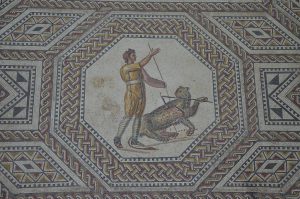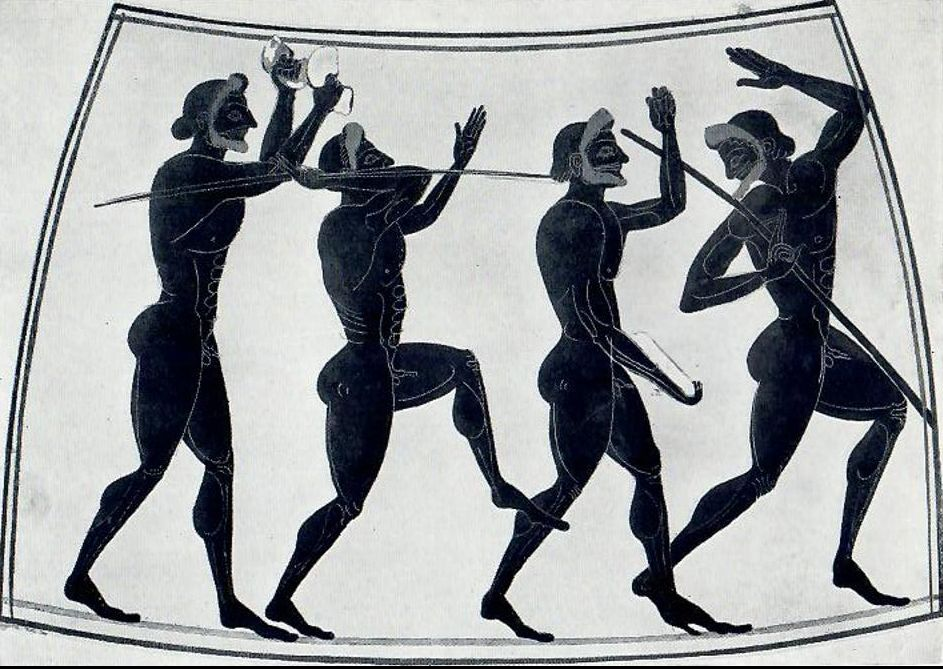Despite its ubiquity in ancient warfare, the javelin remains a poorly understood weapon, largely due to its constant linking with the spear. Despite the visual similarities, the javelin is more than just a spear in flight; rather, it’s a separate specialized weapon.
The largest difference between the thrown, or cast, javelin and the held spear is the working of the shaft, though unfortunately very few wood javelin shafts survive. While the javelin was a disposable weapon, meant to be thrown and often unable to be recovered, there is no reason to believe that this meant it was made cheaply. The shaft of the javelin would be crafted to have a specific balance point, between 33% and 50% the length of the weapon, measured from the tip. A point of balance measuring halfway between the tip and butt ends of the javelin would allow the object to fly the longest distance when thrown with equal force while having the balance at one-third the distance from tip to butt would allow for the greatest impact on the target without altering characteristics in flight. There are examples from throughout this range for specialty weapons—such as the Roman pila, weighted at the front; or a Greek sporting javelin, weighted at the middle. Most examples have a point of balance at or near 40% distance from tip to butt, so we might consider this the generally accepted compromise between the longer distance and hardest impact.
Because the wooden shaft of a weapon rarely survives in the archaeological record, the designation between a spear and javelin usually comes from the surviving metallic head, though heads of bone or stone seem to exist into the medieval period. Therefore, the designation of a spear or javelin head often comes from the size of the head, with smaller, lighter objects often considered better fit for javelin heads, and the larger, heavier ones considered fit for the spears. However, some fully intact javelins—like the Viking age javelin from Lend- breen, Norway—demonstrate that ancient and medieval people felt comfortable fitting their javelins with large heads. This can be beneficial to the aerodynamics of the weapon, moving the point of balance further up the shaft while requiring less working of the wood. Likewise, the smaller heads benefit a spear, allowing for a balance closer to the hand with less work. What we might consider a better indicator of a javelin is if the head of the weapon is asymmetrical or barbed. Many surviving spear or javelin heads, particularly from the pre-medieval era, included barbs like a harpoon, making the weapon harder to remove from bone or armor after entering a target. This would be a hindrance for a spear, as it would mean the weapon might have to be abandoned after a single successful attack. Other asymmetries and oddities in the javelin head, such as circular or semi- circular cut-outs along the edges, saw-toothed edges, and wave-patterned blades would achieve the same end. Likewise, there are examples of javelin heads with spiral twisted blades, which could match the spiral on the object in flight, essentially drilling into the opponent.

Another aspect of the javelin, common but not universal, was the use of a throwing cord, often known by its Latin name, amentum. This was a short, circular length of cord (usually flax, linen, or leather) that would be tied behind the balance point of the weapon, then wrapped in a few large spirals around the shaft. Keeping the cord held taut, the thrower would place either his index finger or index and middle fingers in the loop. The fingers will naturally slip out of the loop slightly after the javelin has left the hand. This will add more power to the throw, but will also help give it a spiral in the air; experiments at Colorado Mesa University have shown that collegiate-level javelin throwers could double the distance of their throws if they used the amentum.
The javelin in ancient times was not simply a cheap and disposable spear, nor was it a spear in flight. It was a distinct weapon in the eyes of its wielder, just as different from his spear as his axe or sword. The javelin would have been made precisely and delicately to enhance its use as a missile weapon.





